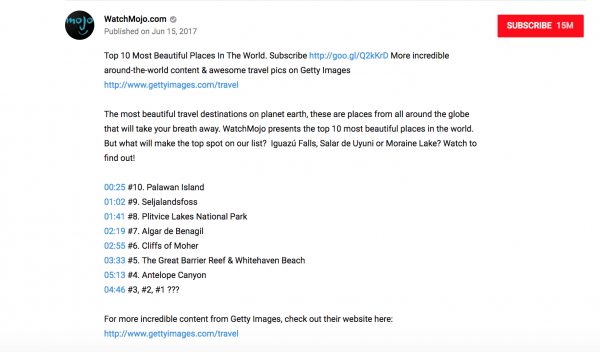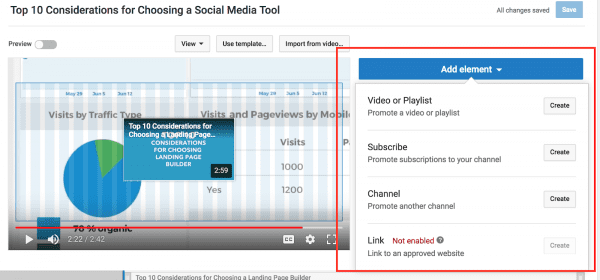Chances are, that if you’ve had an online presence at all in the past year, you’ve come across a great deal of videos from a variety of different brands and individuals alike.
This is not by any coincidence. The number of internet users watching videos daily is on the rise and is taking up an increasing portion of all of the media shared online. It is predicted that videos will make up a total of 80% of all internet traffic by 2020. In terms of engagement, in 2017, 90% of user-shared content was in video form.
The most successful marketers will hop on this train as soon as they can. To go along with this, social media platforms are reorienting their products to make it easier for all creators to make engaging videos.
Facebook and Instagram building out Live and Stories and Facebook is increasingly focusing on videos in their timeline. Snapchat’s rose to prominence amongst millenials which has caught the eyes of advertisers. Alongside being one of the largest distributors of free video content, YouTube is now introducing paid tiers to their product.
Video marketing can be an expensive undertaking, depending on how you go about it, but it’s well worth it. According to WordStream, 51% of marketers cite video as the type of content with the best overall ROI. That said, it doesn’t have to be an expensive undertaking – some rising forms of content include low quality vlogs (video blogs) and twitch streams (where people stream videos of themselves playing videos games).
Below, you will find our top tips for creating a successful video marketing content.
Tip #1: Hook ‘em fast
Gone are the days of patience being a virtue. In this day and age, an internet user’s attention span is shorter than ever.
One fifth of users click off a video within 10 seconds, so make sure to craft an enticing hook. That doesn’t mean the videos have to be short, but in a world of billions of videos, people need to have a reason to stay on your video over someone else’s.
Tip #2: Add value
With all content strategy, you should be aiming to add value to your audience. Whether it be through providing entertainment, or educating users with specialized knowledge, or keeping them up to date on what’s new in the world, it should be a goal to always produce videos you’d want to watch yourself.
Tip #3: Publish your video to multiple places
More specifically, videos shouldn’t only be uploaded to YouTube.
You are denying yourself valuable channels to reach potential viewers (Facebook, Instagram, Twitter, Vimeo and Snapchat are a few other options to consider.) Different platforms have different ways of helping viewers discover their content, the more channels you use, the more likely you are to capture your target audience across different axises such as age group (ie. a younger crowd on Snapchat, an older crowd on Instagram). Of course, this decision should be made with an analysis of where your target audience spends most of their time.
Tip #4: Tap into SEO practices
Simply put, video description and assigned tags are how Google indexes your content. While YouTube shouldn’t be the only platform you post to, it should be priority to post there for the SEO benefits.
For example, using specified keywords that are highly searched by YouTube users, writing clear and long video descriptions ending with a link, and creating YouTube playlists that make it easy for users to surf your videos are some of the best practices that should be considered in order to optimize your channel.
Below, you’ll find an example for an effective video description.

Tip #5: Be consistent, but mindful
Is it too obvious to say that video is a visual medium? Probably!– but due to the visual nature of video, it is yet another opportunity to solidify your brand’s look and personality.
Show your audience familiar faces, consistent tone, and on-brand coloring. However, be sure to use the right type of content for the right platforms. Take advantage of Instagram and Snapchat use of portrait orientation and unedited videos, while sticking to landscape and more professionally edited videos on YouTube and Facebook.
Tip #6: Tell a story
When embarking on the making of a new video, having a clear objective and vision is a crucial first step. When producing a video, it should be impeccably planned, and well-structured (once the camera starts rolling, it will be hard to stop it–plus you could stand to lose out on time, and money.)
A strong storyboard, well-written script, and a detailed pre-production meeting (PPM) will be instrumental in your organization and success.
Tip #7: Keep up the quality
Five or ten years ago, it might have been acceptable to post a low-definition video (sort-of). Since then, our video tastes have rapidly advanced, along with the advancements in video technology. The reality is, the audience will not have the patience for a low quality video.
The good news? You can shoot an amazing quality HD video on a simple smartphone!
Tip #8: Optimize content to be played without sound on news feeds
In the advent of the growth of smartphones, users are consuming content through their devices more and more. With products that use feeds (Instagram, Facebook, Twitter) which show a combination of videos, photos, articles and text snippets, chances are users won’t want to watch the video with sound on, especially if they’re in public.
If your video content is lacking visual cues, subtitles might be the way to go. Most major news outlets and brands have started uploading videos with subtitles in order to accommodate this growing audience.
Tip #9: Include a call to action
Like with most marketing materials, including a CTA just makes business sense. For video, you may often see an “end panel” with links or a prompt for the audience. Here, your CTA can prompt audience members to take an action like visiting a website, or clicking to another video.
Another method of doing this is having well-planned call to action pop-up somewhere in the middle of the video, when the user is most engaged with the content.
It is important to exert caution here, as you don’t want to annoy the user with either– use your judgement to determine whether or not it would be appropriate for your video.
Here’s an example of adding an element to display in the last minutes of a video as CTA:

As a medium, video has earned its place in the content hierarchy. Going into 2018, marketers that put great importance on producing video content will reap the rewards. Want to learn more about 2018 trends coming your way? Check out our blog.
Don’t forget to share this article
